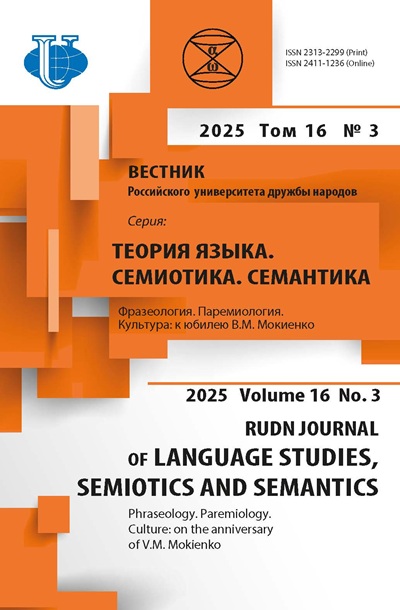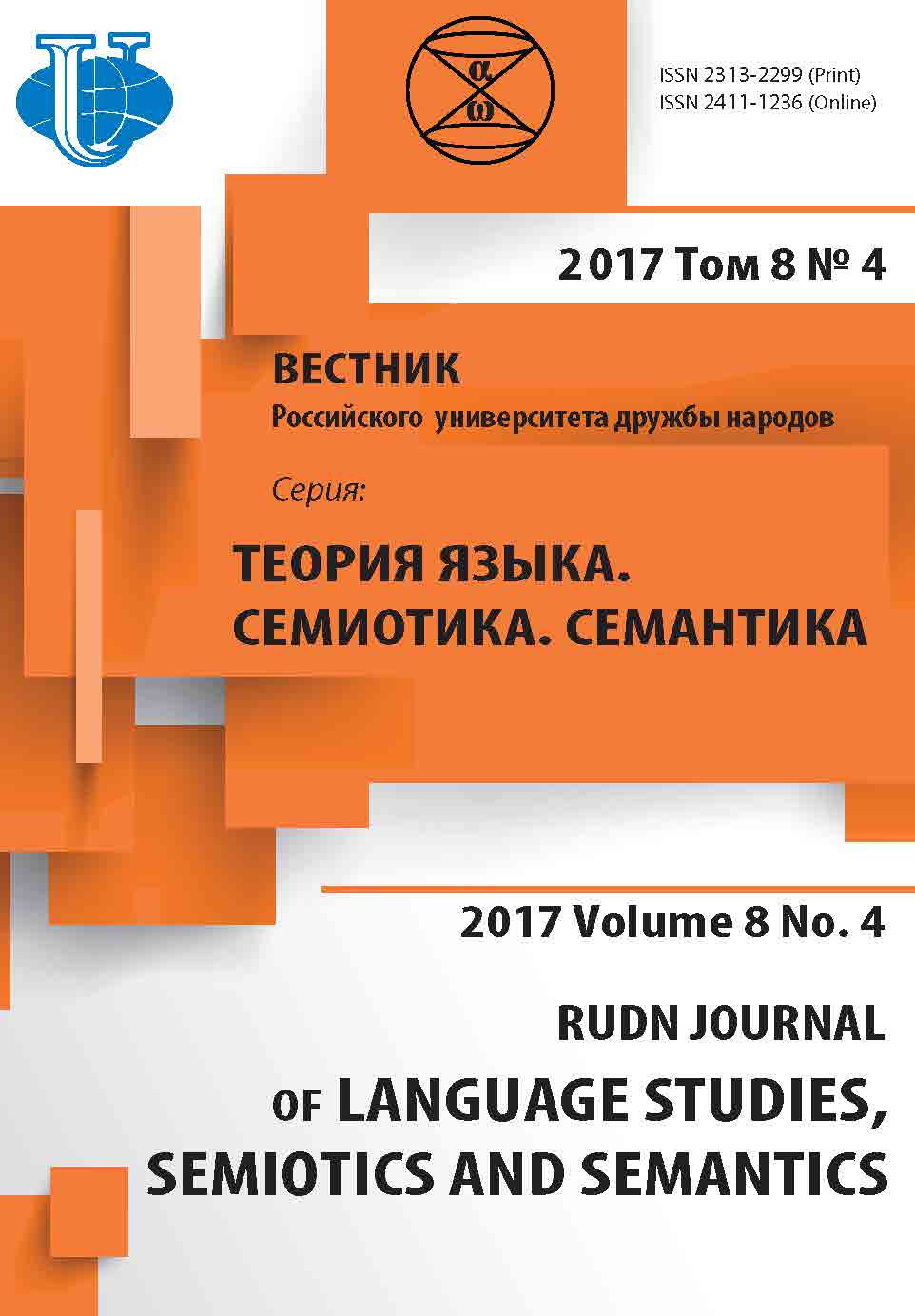LATIN IN TATTOO INDUSTRY
- Authors: Chinina D.S1
-
Affiliations:
- Moscow State Regional University
- Issue: Vol 8, No 4 (2017)
- Pages: 985-992
- Section: ARTICLES
- URL: https://journals.rudn.ru/semiotics-semantics/article/view/17977
- DOI: https://doi.org/10.22363/2313-2299-2017-8-4-985-992
- ID: 17977
Cite item
Full Text
Abstract
The issue of the article is a place of Latin in the modern tattoo industry. The role of Latin as one of the most common languages used in the field of body art is discussed. The classification of phrases in Latin that are often used for tattoos is given. In the course of work a statistical study aimed at identifying the most popular forms of Latin in tattoos is conducted. The theme of the article is relevant because it implies a study of the subcultural code, in which Latin plays an integral part. The object of the article is the place of Latin in the modern tattoo industry. The subject of the paper is the usage of Latin in the modern body art. The information for the scientific work is taken from the Internet as well as from national scientific literature. In conclusion statistics demonstrate how really widespread usage of Latin in modern tattoo art is. It is also stated that interest to the research of the methods of Latin usage in modern art may give us more profound understanding of the of Latin integration degree today. The article can be applied for courses of Sociolinguistics and the Latin language.
Keywords
About the authors
Daria S Chinina
Moscow State Regional University
Author for correspondence.
Email: dariaexplosion@gmail.com
Daria S. Chinina, undergraduate student in Moscow Region State University, Theoretical and Computer Linguistics Department; Interests: ancient languages and cultures, sociolinguistics, comparativistics, English philology
105005, Moscow, Radio str., 10A, Russian FederationReferences
- Berdenko, G.B. (2008). Space of the Myth. Applied Legal Psychology, 4, 37—44. (in Russ.).
- Valujtseva, I.I. (2005). Sacral Languages and Time Factor. Moscow: Vestnik MGOU. Series: Linguistics, 6, 14—21. (in Russ.).
- Ilovayskiy, D.I. (1997). Ancient History. Middle Ages. Modern History. Moscow: Sovremennik. URL: http://www.bibliotekar.ru/polk-8/47.htm (in Russ.). (accessed: 15.07.2017).
- Karaseva, T.A. (2003). Historical Phonetic of Latin. Commentary on Grammar of Latin Texts of VII—I Centuries B.C. The second edition and additions. Moscow: Greko-latinskiy kabinet (in Russ.).
- Jarho, V.N., Pokrovskaja, Z.A., Katsman, N.L., et al. (1998). Latin: Manual for Students of Pedagogical Institutes, Qualification “Foreign Languages”. Moscow: Vyshaya Shcola. (in Russ.).
- Maksimenko, O.I. (2016). Polycode Components of Subculture (on the Example of Hippy and Hip-Hop). Moscow: International Relationships, 29—36. (in Russ.).
- Malinauskene, N.K. (2001). Introduction to the History of Latin. General Questions and Preclassical Period. Lecture Course. Moscow: Greko-latinskiy cabinet. (in Russ.).
- Melnikova, L.A. (2015). Tattoo as Representation of Sociocultural Codes of Visual Definition (Based on Research of Vladivostok Subcultures Materials) [synopsis]. Komsomolsk-na-Amure: HPE “VVSU”. (in Russ.).
- Grabar-Passek, M.E. & Gasparov, M.L. (1970). Monuments of Medieval Latin Literature of IV— IX centuries. Moscow: Science. (in Russ.).
- Khukhuni, G.T., Belyaeva, I.F., Valujtseva, I.I. & Vekovishcheva, S.N. (2013). Linguistics and Linguists: Past and Future. Moscow: PO of MGOU. (in Russ.).
- Shabaga, A.V. (2009). Historical Subject in Search for Individual Self. Moscow: Publishing Office of RUDN. (in Russ.).
Supplementary files












